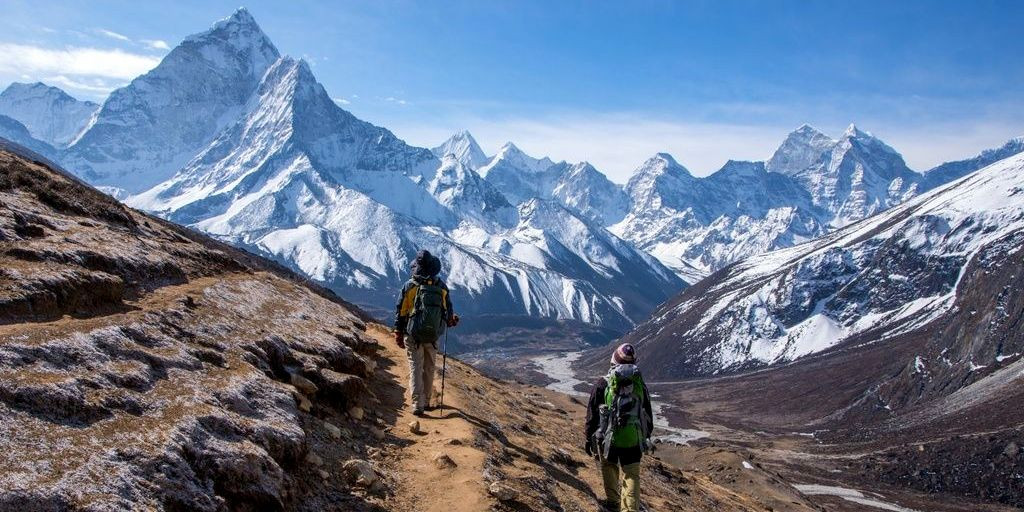Everest Base Camp Trek
The Everest Base Camp Trek is an iconic journey that attracts adventurers from around the world eager to stand at the base of the world’s highest peak, Mount Everest (Sagarmatha in Nepali). This trek not only offers stunning natural beauty but also provides a deep cultural immersion into the lives of the Sherpa people who inhabit the Solu Khumbu region.
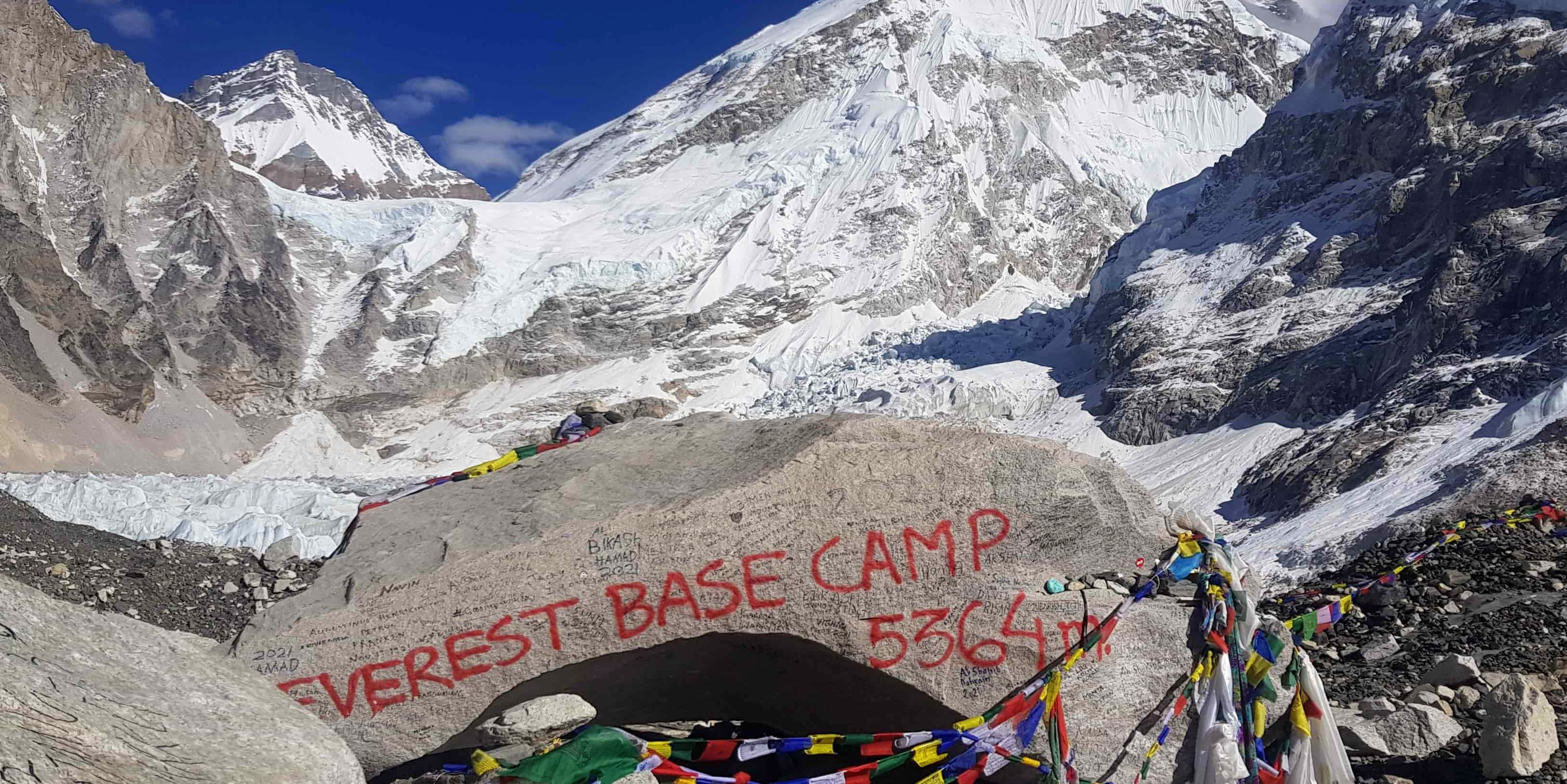
Key Details of the Everest Base Camp Trek
-
Duration: Typically, the trek takes about 12 to 14 days from Lukla to Everest Base Camp and back. This includes several days for acclimatization to prevent altitude sickness.
-
Difficulty: The trek is considered moderate to challenging, suitable for reasonably fit individuals. No technical climbing is involved, but the high altitude and long walking days present their challenges.
-
Best Time to Go: The best times for this trek are from March to May during the spring season and from September to November during the autumn season. These months generally offer clearer skies and more stable weather.
Highlights of the Trek
-
Namche Bazaar: Often referred to as the gateway to the high Himalayas, this vibrant town offers trekkers a chance to acclimatize and explore local Sherpa culture. It is well-equipped with cafes, gear shops, and even internet cafes.
-
Tengboche Monastery: Located at 3,867 meters, it is one of the largest monasteries in the Khumbu region and offers panoramic views of the Himalayan giants including Everest, Ama Dablam, and Lhotse.
-
Kala Patthar: While not technically part of Base Camp, a climb up Kala Patthar (5,643 meters) is often included in the itinerary for the best view of Everest’s peak, as the base camp itself does not offer a view of the summit.
-
Everest Base Camp: Reaching the base camp at 5,364 meters is the trek’s ultimate goal, providing trekkers with a close-up view of the infamous Khumbu Icefall and the starting point for Everest summit expeditions.
What to Expect
-
Trail Conditions: The trail involves long days of walking on rocky paths, crossing suspension bridges, and ascending steep inclines.
-
Accommodations: Trekkers typically stay in teahouses or lodges that provide basic accommodation and meals, allowing for a closer interaction with the local communities.
-
Acclimatization: Adequate acclimatization days are vital, usually spent in Namche Bazaar and Dingboche or Lobuche, to adjust to the high altitude and reduce the risks of altitude sickness.
-
Scenery: Expect dramatic changes in scenery, from lush forests and alpine meadows early in the trek to stark, rocky landscapes as you approach Base Camp.
The Everest Base Camp Trek is a powerful experience, filled with awe-inspiring landscapes and profound personal achievement. It’s not just a physical journey, but also an exploration into the heart of the Himalayan range, offering insights into the natural and cultural tapestry of this unique region.
Annapurna Circuit
The Annapurna Circuit is one of Nepal's most famous and comprehensive trekking experiences, circling the Annapurna massif and offering trekkers a unique blend of natural beauty, cultural diversity, and physical challenge. This trek is renowned for the dramatic changes in landscape and climate that one experiences from start to finish, traveling from lush subtropical regions to the arid high-altitude desert.
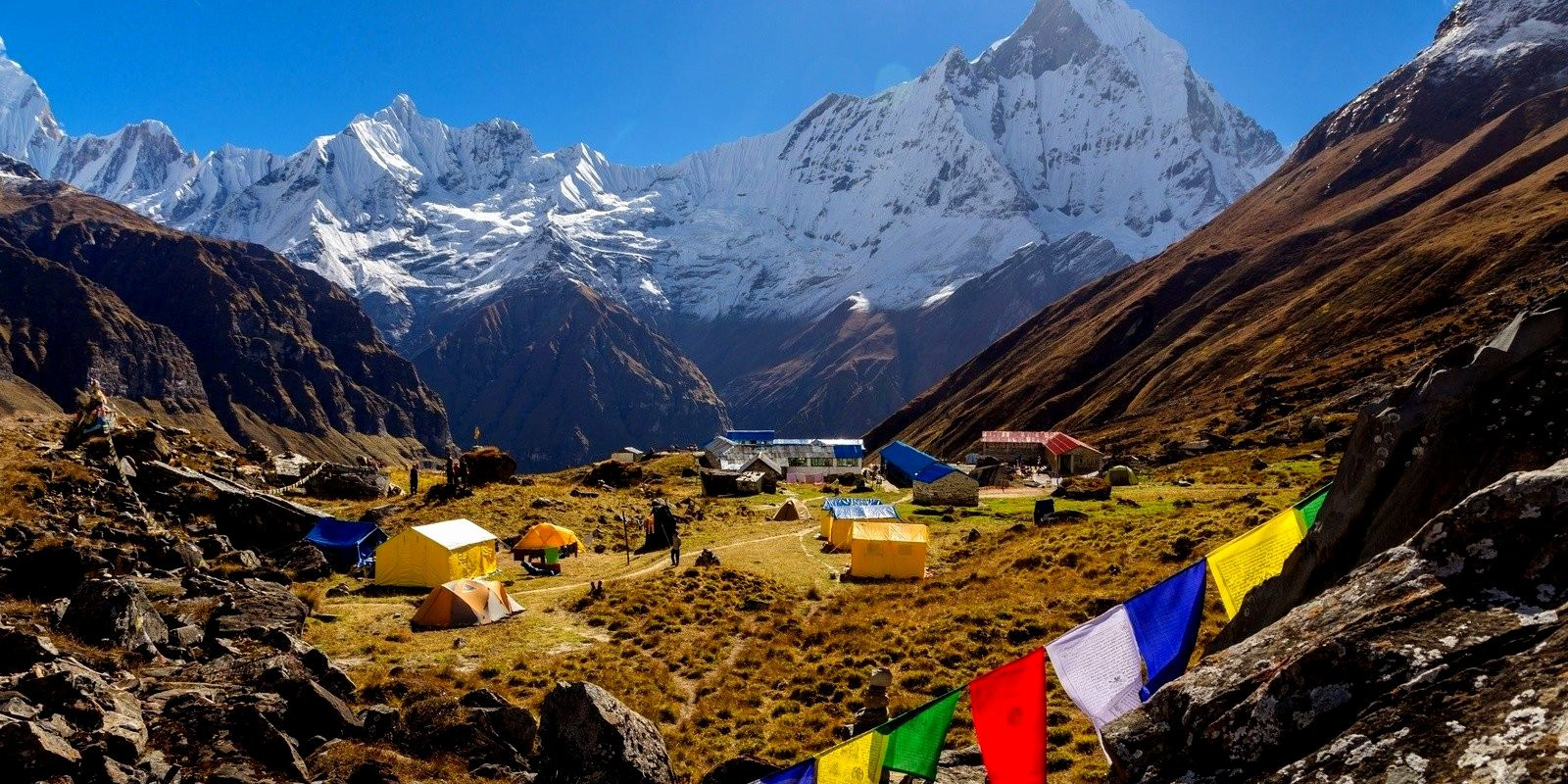
Key Details of the Annapurna Circuit
-
Duration: The trek traditionally takes about 12 to 21 days to complete, depending on your pace and itinerary preferences, including side trips and rest days for acclimatization.
-
Difficulty: The Circuit is considered moderate to challenging, suitable for fit individuals with some trekking experience, especially because of the long distances and high altitudes involved.
-
Best Time to Go: The best seasons for the Annapurna Circuit are pre-monsoon (March to May) and post-monsoon (late September to November) when the weather is generally dry and clear, providing the best views and comfortable trekking conditions.
Highlights of the Trek
-
Crossing Thorong La Pass: At 5,416 meters, Thorong La is the highest and most challenging point of the trek, offering breathtaking views across the surrounding peaks and valleys.
-
Diverse Ecosystems: The trek starts in lush rhododendron forests, passes through paddy fields and subtropical forests, and eventually reaches the Tibetan Plateau-like landscape around Manang.
-
Cultural Experiences: The circuit provides a chance to experience the rich cultural diversity of Nepal, including the communities of Gurung, Manangi, and Thakali people, each with their own unique traditions and languages.
-
Manang and Mustang: These regions are known for their stunning landscapes and unique Tibetan Buddhist culture.
-
Muktinath: An important pilgrimage site for both Hindus and Buddhists, Muktinath is known for its 108 water spouts and eternal flame fed by natural gas underground.
What to Expect
-
Trail Conditions: The trail can be steep and rugged in places but is well-trodden. It winds through mountainous terrain with plenty of ascents and descents.
-
Accommodations: Teahouses and lodges along the circuit provide basic yet comfortable lodging and hearty meals, integral to the trekking experience.
-
Acclimatization: Proper acclimatization is crucial, particularly before crossing Thorong La Pass to prevent altitude sickness.
-
Scenery: Expect dramatic vistas that include deep gorges, high mountain passes, Buddhist stupas, prayer wheels, and vibrant prayer flags that add a spiritual dimension to the journey.
The Annapurna Circuit not only challenges trekkers physically but also engages them emotionally and spiritually, offering a deeply rewarding journey through one of the world's most spectacular landscapes. Whether you are drawn by the challenge of Thorong La Pass, the beauty of the Annapurna range, or the warmth of the Nepali people, this trek promises an unforgettable adventure.
Annapurna Base Camp
The Annapurna Base Camp (ABC) trek is a renowned journey that attracts trekkers to the heart of the Nepalese Himalayas, offering an exquisite mix of natural grandeur, cultural encounters, and attainable challenges. This trek is particularly popular due to its more moderate difficulty level compared to other high-altitude treks and its shorter duration, while still providing the majestic close-up views of the Annapurna range.
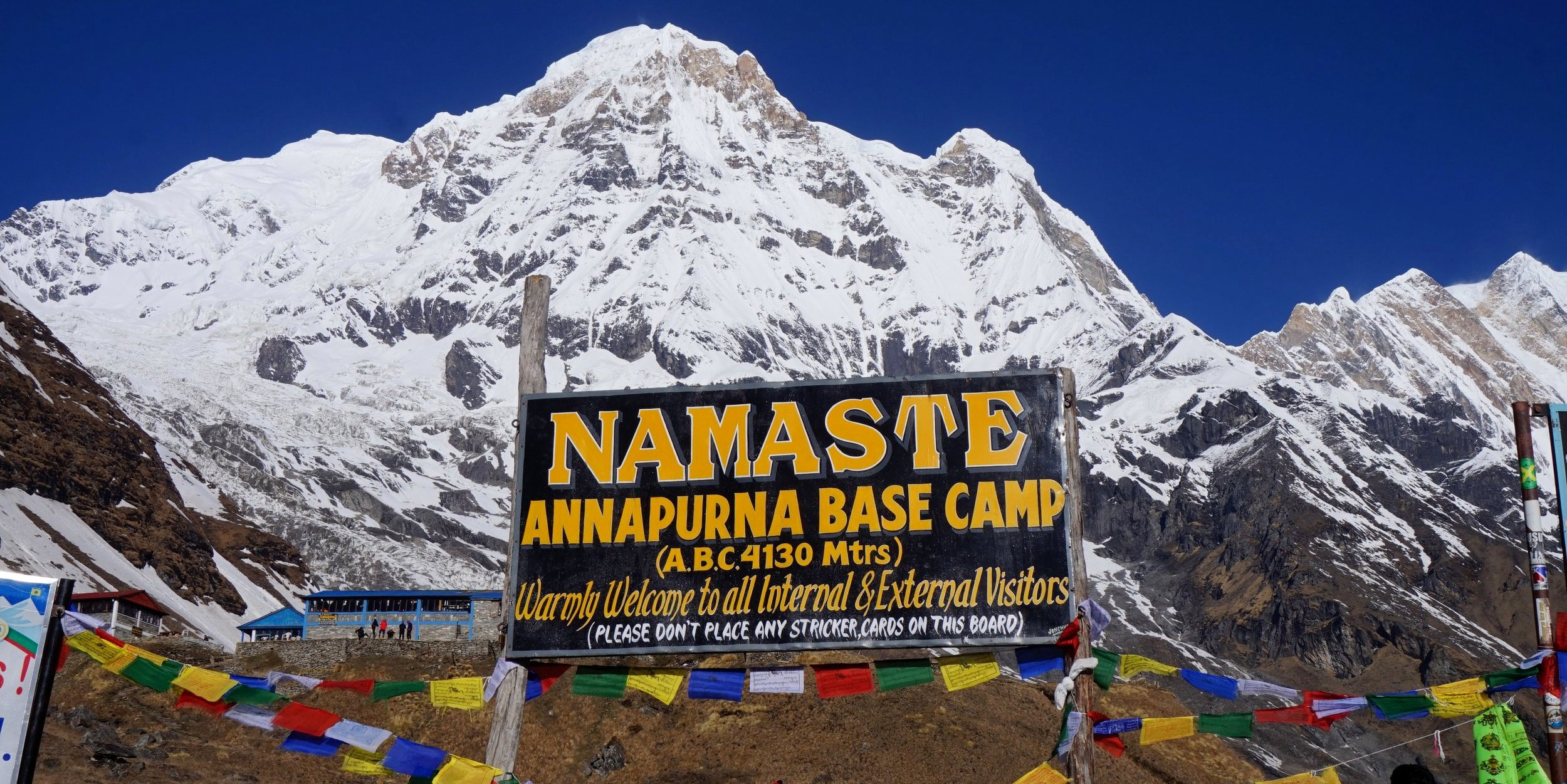
Key Details of the Annapurna Base Camp Trek
-
Duration: The trek usually takes about 7 to 12 days, depending on the specific route and pace of trekking.
-
Difficulty: Considered moderate, it's accessible to most physically fit individuals. The trek involves daily ascents and descents, often on stone steps and uneven trails.
-
Best Time to Go: The optimal times for the ABC trek are during the spring (March to May) and autumn (September to November) months, when the weather is clear and dry, offering the best visibility and trekking conditions.
Highlights of the Trek
-
Spectacular Mountain Views: The trek offers stunning views of several high peaks, including Annapurna South, Annapurna I, Hiunchuli, Gangapurna, and Machapuchare (Fishtail Mountain).
-
Machapuchare Base Camp: On the way to ABC, trekkers often stop at Machapuchare Base Camp, which provides a fantastic panorama of the surrounding mountains.
-
Diverse Flora and Fauna: Trek through rhododendron forests, bamboo groves, and alpine meadows, all of which can be teeming with wildlife.
-
Gurung Villages: Experience the warm hospitality and rich culture of the Gurung people in villages like Ghandruk and Chhomrong.
What to Expect
-
Trail Conditions: The paths are well-maintained but can be steep, including numerous steps up and down the hillsides. Weather conditions can change rapidly in the mountains, affecting trail conditions.
-
Accommodations: Comfortable teahouses along the trekking route offer basic accommodations and traditional Nepali meals, which helps trekkers immerse in the local way of life.
-
Acclimatization: While the risk of altitude sickness is lower than on higher treks, it's still important to ascend gradually and stay hydrated.
-
Scenery: The trek traverses through diverse landscapes, from lush valleys and dense forests to rocky mountain terrain and alpine zones.
The Annapurna Base Camp trek not only offers the exhilaration of high-altitude hiking but also the opportunity to witness the beauty of the Himalayas up close. It's an ideal choice for those looking to experience the majesty of Nepal's mountains without the longer durations or extreme altitudes associated with some other treks.
Langtang Valley
The Langtang Valley trek is a serene and picturesque journey into one of the closest trekking regions to Kathmandu, offering a splendid combination of natural landscapes and cultural richness. This trek is highly regarded for its accessibility, relatively moderate difficulty, and the dramatic scenery that rivals some of the more famous trekking routes in Nepal. Often referred to as "the valley of glaciers," Langtang is an ideal destination for those who wish to experience the Himalayas without venturing too far from the capital.
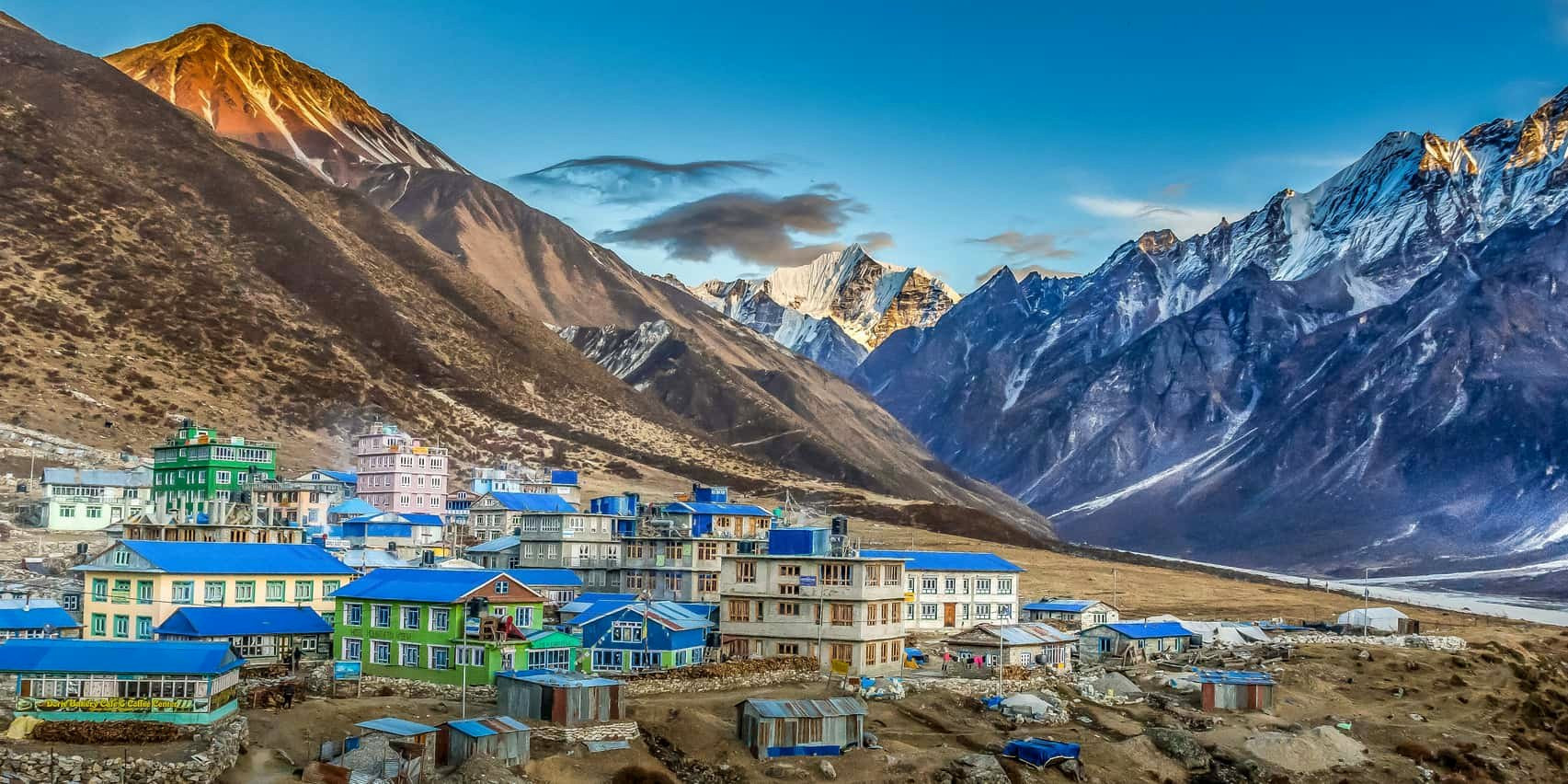
Key Details of the Langtang Valley Trek
-
Duration: The trek can be completed in about 7 to 9 days, making it perfect for those with limited time but who still want to experience the grandeur of the Himalayas.
-
Difficulty: The trek is considered moderate; it involves daily walks of 5-6 hours on average, with some days requiring ascent through steep terrain.
-
Best Time to Go: Spring (March to May) and autumn (October to November) are the best seasons for the Langtang Valley trek, offering clear skies and temperate weather.
Highlights of the Trek
-
Kyanjin Gompa: This small village is the turnaround point for many treks in the Langtang Valley and home to an ancient monastery. Trekkers often use it as a base for acclimatization and further exploration, including ascents of nearby peaks.
-
Langtang Village: Rebuilt after the devastating 2015 earthquake, this village is a testament to the resilience of the local community and offers a unique insight into the lives of the Tamang people.
-
Glacial Views: The trek offers views of Langtang Lirung (7,234 meters), Langtang II, and other peaks, as well as access to the impressive Langtang glacier right near Kyanjin Gompa.
- Tamang Culture: The region is predominantly inhabited by the Tamangs, an ethnic group of Tibetan descent, whose culture, language, and religion add a rich cultural layer to the trekking experience.
What to Expect
-
Trail Conditions: The trails are well-marked and follow a route that includes forested paths, river crossings, and moraine.
-
Accommodations: Teahouses along the trek offer basic yet comfortable lodging and traditional meals, providing a cozy atmosphere for trekkers.
-
Wildlife: The Langtang National Park, through which the trek passes, is home to various wildlife, including the rare red panda and Himalayan tahr.
-
Scenery: From lush forests and wide valleys to rocky landscapes and impressive glaciers, the trek provides diverse scenery that changes dramatically as altitude increases.
The Langtang Valley trek is not just a journey through nature, but an intimate exploration of cultural heritage amidst some of the most stunning landscapes in Nepal. It's an excellent alternative for those who prefer a quieter trekking route that still offers all the beauty and challenge of the Himalayas.
Upper Mustang
Upper Mustang, often referred to as the "Last Forbidden Kingdom," is a remote and ancient region of Nepal that offers a starkly beautiful landscape reminiscent of the Tibetan plateau. This area was restricted to outsiders until 1992, preserving a largely undisturbed and authentic Tibetan culture. The trek to Upper Mustang is a journey back in time, to explore a stark desert landscape dotted with ancient monasteries, fortified villages, and hidden caves.
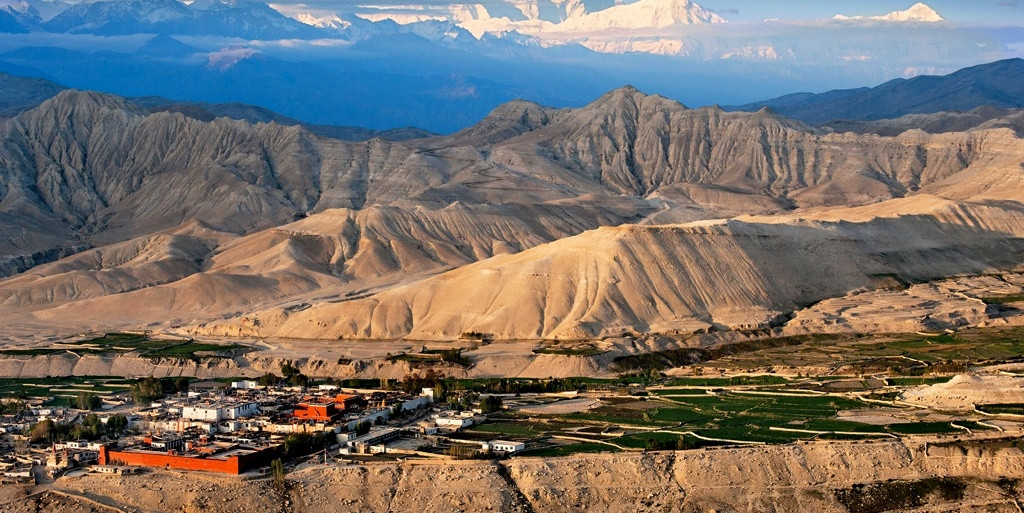
Key Details of the Upper Mustang Trek
-
Duration: Typically, the trek takes about 10 to 14 days, depending on the specific itinerary and points of exploration.
-
Difficulty: The trek is considered moderate. It does not involve high altitude climbing as most of the trail stays below 4,000 meters, but the terrain can be rugged and windy.
-
Best Time to Go: The best times to visit Upper Mustang are during the spring (May to early June) and autumn (late September to November). These months avoid the heavy snows of winter and the rainy season of summer, offering clearer paths and better visibility.
Highlights of the Trek
-
Lo Manthang: The walled capital city of the ancient Kingdom of Mustang. It is a highlight with its alleyways, monasteries, and the royal palace, offering a glimpse into a way of life that has remained unchanged for centuries.
-
Ancient Monasteries: Such as Thubchen and Jampa Gompas in Lo Manthang, which are rich in Buddhist art and historical artifacts.
-
Unique Landscape: The trek features a barren, desert-like terrain with deep ravines and rock shelves, flanked by snowy peaks in the distance—a dramatic contrast to the lush greenery found in other parts of Nepal.
-
Tiji Festival: A three-day ritual known as "The Chasing of the Demons," held annually in Lo Manthang. This colorful festival is an ideal time for visitors to experience local culture and religious practices.
What to Expect
-
Trail Conditions: The paths are generally well-trodden and not technically difficult, but the arid environment and potential for strong winds can make trekking challenging.
-
Accommodations: While basic, teahouses along the route have been improving in recent years. They provide essential services and a warm, authentic experience of hospitality in the region.
-
Permits: Upper Mustang requires a special trekking permit due to its status as a restricted area, which helps preserve its unique culture and minimizes environmental impact. This permit has a higher cost than other areas in Nepal.
-
Cultural Etiquette: Respecting local customs and traditions is crucial in this culturally sensitive area. It’s important for trekkers to be mindful of local norms and religious practices.
The Upper Mustang trek offers an unparalleled opportunity to see a part of Nepal that remains largely untouched by modernity, preserving ancient traditions and landscapes. It's an ideal trek for those looking to experience solitude, dramatic natural beauty, and deep cultural immersion in one of the most preserved regions of the Himalayas.
Gokyo Lakes
The Gokyo Lakes trek is a mesmerizing journey to a series of six turquoise, high-altitude lakes in Nepal's Everest region. Often considered a quieter alternative to the classic Everest Base Camp trek, this route offers not only the beauty of the pristine lakes but also some of the best panoramic views in the Himalayas, including the opportunity to view four of the world’s highest peaks: Everest, Lhotse, Makalu, and Cho Oyu.
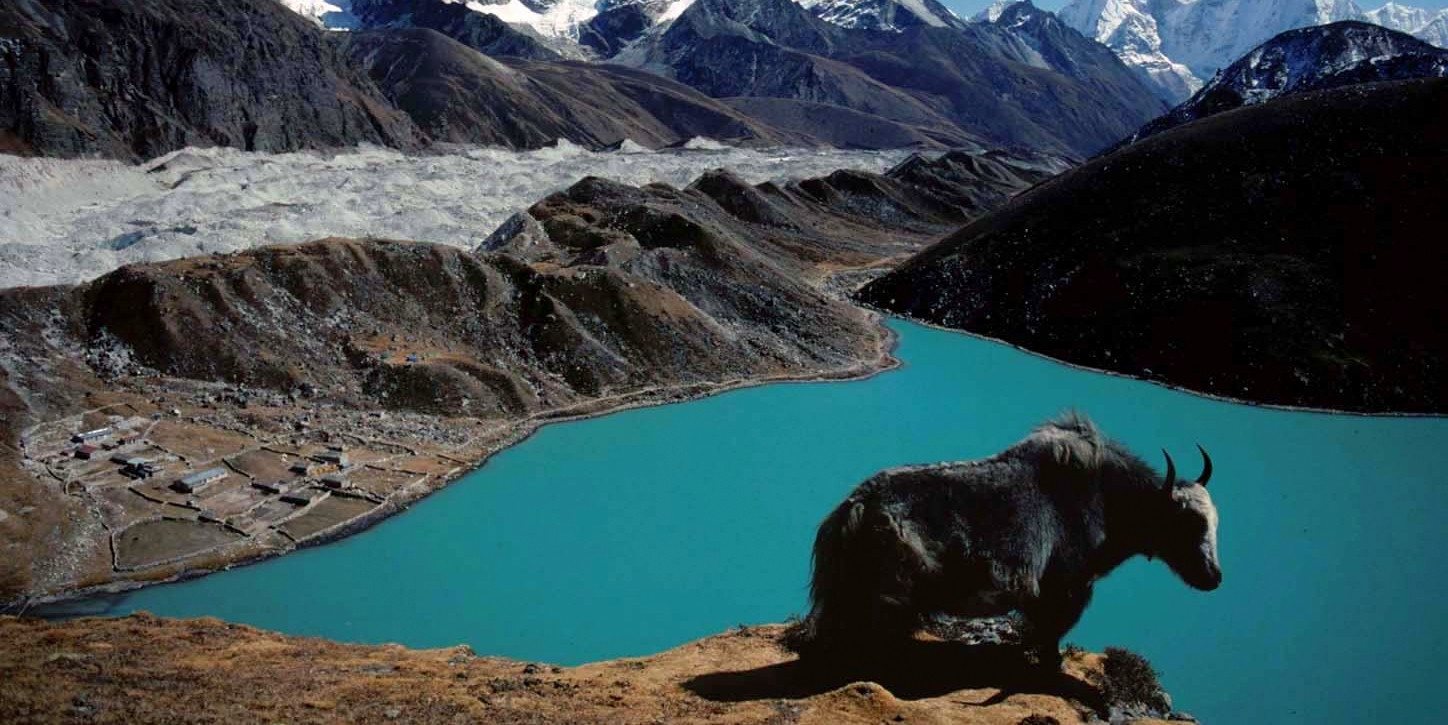
Key Details of the Gokyo Lakes Trek
-
Duration: Typically, the trek takes about 12 to 15 days, depending on acclimatization days and any side trips, such as climbing Gokyo Ri.
-
Difficulty: The trek is classified as moderate to challenging, primarily because of the high altitude and the length of the walking days.
-
Best Time to Go: The optimal months for the Gokyo Lakes trek are from March to May during the spring season and from September to November during the autumn season, when the weather is generally clear and stable.
Highlights of the Trek
-
Gokyo Lakes: These are the world’s highest freshwater lake system, located between 4,700 and 5,000 meters. Each lake offers a unique beauty, surrounded by snowy peaks.
-
Gokyo Ri: Climbing this peak (5,357 meters) is one of the highlights of the trek. It provides trekkers with a breathtaking sunrise and 360-degree panoramic views of Everest, Lhotse, Makalu, and Cho Oyu.
-
Ngozumpa Glacier: The largest glacier in the Himalayas, offering spectacular views and a challenging trekking experience.
-
Renjo La Pass: One of the alternative routes for returning or continuing the trek, offering stunning views and less crowded paths compared to more traditional routes.
What to Expect
-
Trail Conditions: The trails are well-marked but can be rocky and slippery in places. They traverse through remote areas requiring multiple days of hiking away from the nearest road access.
-
Accommodations: Teahouses along the trek offer basic but comfortable lodging and food, allowing trekkers to travel light without the need for camping gear.
-
Acclimatization: Proper acclimatization is crucial to avoid altitude sickness, with recommended stops in places like Namche Bazaar and the village of Gokyo itself.
-
Scenery: The trek is renowned for its stunning natural beauty, including dramatic views of glaciers, gorges, and of course, the iconic Gokyo Lakes themselves.
The Gokyo Lakes trek offers an unforgettable adventure for those looking to explore the quieter, yet equally majestic parts of the Everest region. With its series of beautiful glacial lakes, stunning mountain passes, and the welcoming warmth of Sherpa hospitality, it stands out as a must-do for passionate trekkers seeking a unique Himalayan experience.
Everest Three Passes Trek
The Everest Three Passes Trek is considered one of the most comprehensive and challenging treks in the Everest region, providing an in-depth exploration of the landscapes and culture surrounding the world's highest peak. This trek encompasses three high passes, each offering unique views and experiences, as well as visits to both Everest Base Camp and Gokyo Lakes, making it the ultimate adventure for ambitious trekkers.
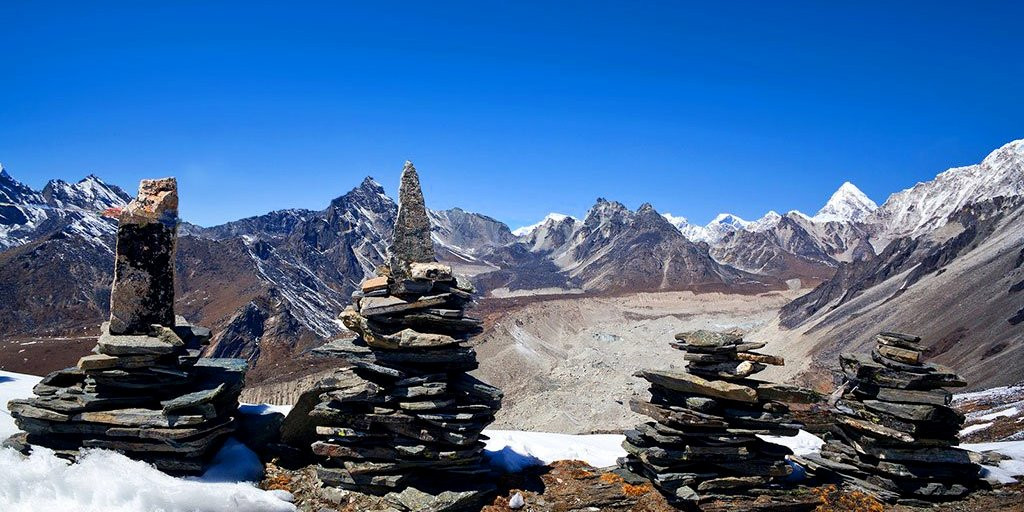
Key Details of the Everest Three Passes Trek
-
Duration: The trek usually takes about 18 to 21 days, depending on factors like weather conditions, pace, and time spent acclimatizing.
-
Difficulty: This trek is classified as challenging due to its long duration, high altitudes, and the physical demands of crossing three high mountain passes.
-
Best Time to Go: The best times to undertake this trek are during the spring (March to May) and autumn (September to November) months when the weather is more stable and the views are clearest.
Highlights of the Trek
-
Kongma La Pass (5,535 meters): The highest of the three passes offers stunning views of surrounding mountains and glaciers, setting the tone for this high-altitude adventure.
-
Cho La Pass (5,420 meters): This pass provides a route between the Everest Base Camp and the Gokyo valleys, featuring breathtaking sceneries of Ama Dablam and Cholatse.
-
Renjo La Pass (5,360 meters): Known for its panoramic views of the Everest range, this pass is often considered the most beautiful, offering a different perspective on the giants of the Himalayas.
-
Everest Base Camp and Kala Patthar: A visit to the base of the world's highest mountain and the climb to Kala Patthar (5,643 meters) for one of the best views of Everest.
-
Gokyo Lakes and Gokyo Ri: Explore the serene Gokyo Lakes and ascend Gokyo Ri (5,357 meters) for spectacular views of Cho Oyu and Everest.
What to Expect
-
Trail Conditions: Expect rugged paths with rocky and icy sections, especially near the passes. Weather conditions can change rapidly, which can affect trail visibility and safety.
-
Accommodations: Teahouses along the route offer basic but comfortable places to stay and eat. These are more sparse in the more remote sections of the trek.
-
Acclimatization: Several acclimatization days are necessary to safely adapt to the high altitudes, especially before attempting the high passes.
-
Scenery: The trek traverses a variety of landscapes, from lush valleys with vibrant Sherpa villages to stark glacial plains and rocky passes.
The Everest Three Passes Trek is an epic journey that challenges even seasoned trekkers, offering unparalleled views and experiences in the high Himalayas. It not only tests one's endurance and willpower but also provides a deep connection with the natural and cultural beauty of the Everest region.
Kanchenjunga Base Camp
The Kanchenjunga Base Camp Trek is an extraordinary journey to the base of the world's third-highest mountain, Kanchenjunga, which stands at a towering 8,586 meters. Located in the eastern part of Nepal, this trek is less frequented by tourists, offering a more secluded and pristine mountain experience. It's known for its spectacular natural beauty, remote landscapes, and the rich cultural heritage of the local communities.
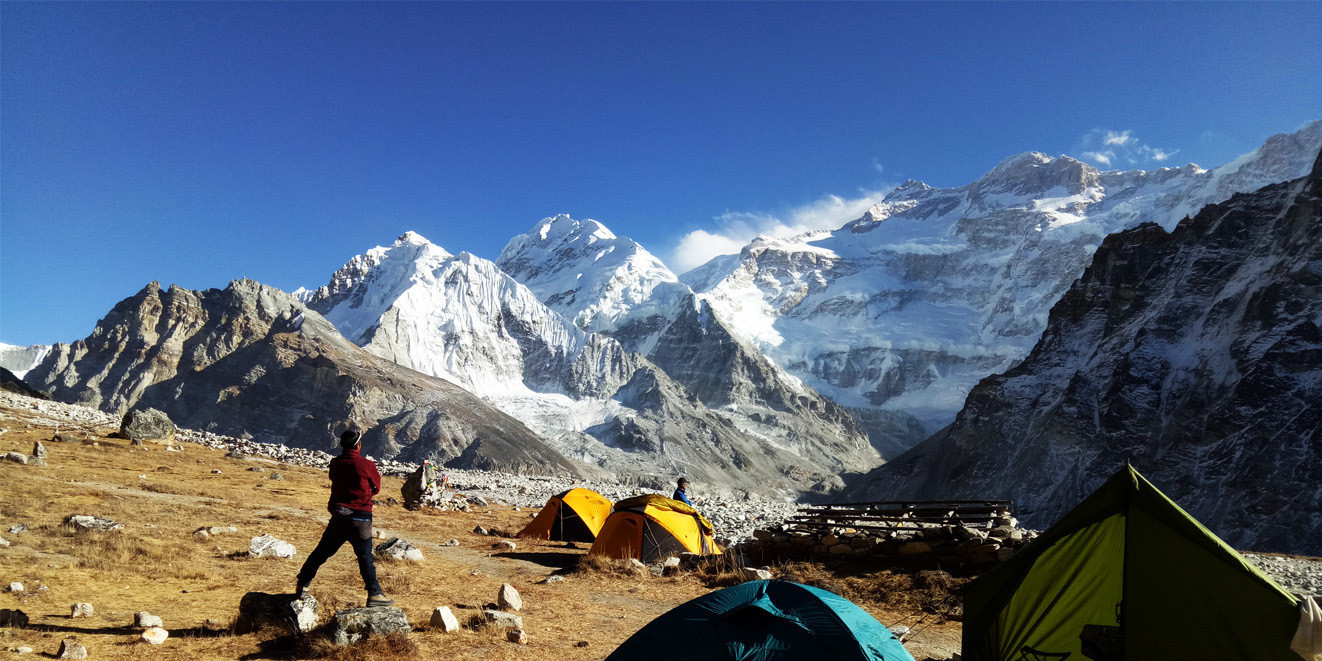
Key Details of the Kanchenjunga Base Camp Trek
-
Duration: The trek typically requires about 14 to 23 days, depending on the chosen route and the pace of trekking.
-
Difficulty: This is considered a challenging trek due to its remote location, the length of the trek, the rugged terrain, and the high altitudes involved.
-
Best Time to Go: The optimal months to undertake this trek are pre-monsoon (March to May) and post-monsoon (September to November) when the weather is mostly stable and clear.
Highlights of the Trek
-
Stunning Mountain Views: The trek offers dramatic views of Mt. Kanchenjunga, Mt. Jannu, and other Himalayan peaks.
-
Remote Trails: Since it's less crowded, trekkers can enjoy a more solitary experience, walking through untouched landscapes.
-
High Altitude Challenges: The trek includes passes such as Sele La, Sinion La, and Mirgin La, providing adventurous routes and stunning panoramas.
-
Diverse Ecosystems: The Kanchenjunga Conservation Area is rich in biodiversity, home to various wildlife including the snow leopard, red panda, and Himalayan black bear.
-
Cultural Diversity: The region is inhabited by a mix of ethnic groups including the Limbu, Sherpa, and Rai communities, offering trekkers a chance to experience diverse cultural practices and traditions.
What to Expect
-
Trail Conditions: The trek involves navigating rugged and often steep trails that may not be well marked. Trekkers should be prepared for variable weather conditions which can include heavy rains and snow.
-
Accommodations: The trek is mostly catered by camping, though there are some teahouses at lower elevations. Trekkers will need to be prepared to camp in remote areas with basic facilities.
-
Permits and Regulations: Trekking in the Kanchenjunga area requires special permits since it is a protected conservation area. This includes a Kanchenjunga Conservation Area Permit and a Restricted Area Permit.
-
Scenery: The trek not only includes mountain vistas but also rhododendron forests, high alpine passes, and traditional villages, offering a full spectrum of the Himalayan landscape.
The Kanchenjunga Base Camp Trek is an adventure for those who seek to explore some of the most remote and untouched parts of the Himalayas. It offers an intense trekking experience that combines physical challenges with a profound cultural immersion, making it one of the most rewarding treks in Nepal.
Tips for Best Trekking Routes in Nepal
Trekking in Nepal is a dream for many adventurers eager to explore the Himalayas. To ensure a successful and enjoyable trek, here are some essential tips:
Choose the Right Trek
-
Match Trek to Fitness Level: Ensure the trek you choose matches your physical fitness and experience. Some routes, like Everest Base Camp or the Annapurna Circuit, are strenuous and require good stamina and health.
-
Consider Your Interests: Whether you prefer cultural immersion or remote wilderness, pick a trek that aligns with your interests. For instance, the Langtang Valley offers cultural insights while the Gokyo Lakes provide serene natural beauty.
Best Time to Trek
-
Seasonal Planning: The best times to trek in Nepal are during the pre-monsoon spring months of March to May and the post-monsoon autumn from September to November. These months offer the clearest skies and the most stable weather conditions.
-
Avoid Monsoon Season: Trekking during the monsoon season (June to August) can be challenging due to rain, mud, leeches, and obscured views.
Preparation and Training
-
Physical Preparation: Engage in regular cardiovascular exercises like running, swimming, or cycling. Include hill and stair climbing since trekking often involves long ascents and descents.
-
Mental Preparation: Be prepared for the physical and mental challenges posed by long days, basic accommodations, and high altitudes.
Packing Essentials
-
Layered Clothing: Weather in the Himalayas can change rapidly. Pack layered, breathable, and moisture-wicking clothing to adapt to varying temperatures.
-
Gear Up: Essential gear includes a sturdy pair of trekking boots, a sleeping bag suitable for sub-zero temperatures, a backpack with a rain cover, a first aid kit, and trekking poles.
Health and Acclimatization
-
Altitude Sickness: Learn about the symptoms of altitude sickness and how to prevent it. Never ascend too quickly and take proper acclimatization days.
-
Stay Hydrated: Drink at least 3-4 liters of water daily to stay hydrated and help prevent altitude sickness.
Hiring Guides and Porters
- Local Support: Hiring a local guide and porter not only provides employment but also enhances safety. Guides are knowledgeable about local customs, language, and routes, while porters can help carry your load.
Travel Insurance
- Comprehensive Coverage: Ensure your travel insurance covers trekking up to the altitudes you plan to reach, including medical evacuation and trip cancellation.
Respect Local Culture
-
Cultural Sensitivity: Show respect to local customs and traditions. Dress modestly, be polite, and ask permission before taking photos of people.
-
Economic Contribution: Support the local economy by staying in local tea houses and buying local products.
Environmental Considerations
-
Leave No Trace: Carry out all your trash, use biodegradable products, and minimize your ecological footprint.
-
Water Treatment: Use water purification tablets or a water filter instead of buying bottled water to reduce plastic waste.
Stay Informed and Connected
- Emergency Preparedness: Carry a map, a compass, and a means of communication (like a satellite phone or a local SIM card). Inform someone of your itinerary and expected return date.
By following these tips, you'll be better prepared to tackle the best trekking routes in Nepal, ensuring a memorable and rewarding experience in the heart of the Himalayas.
Ideal for Trekking in Nepal
Choosing the right time to trek in Nepal is crucial for a successful and enjoyable experience, as the weather conditions greatly affect both the difficulty of the trek and the quality of the views. Here are the optimal times for trekking in Nepal:
Pre-Monsoon Spring Season (March to May)
-
Weather: During this season, the weather is generally clear and stable with moderate temperatures. This is one of the best times to trek as the skies are mostly clear, offering excellent views of the Himalayas.
-
Advantages: The trails are vibrant with blooming rhododendrons and other flowers, especially in April. It’s also a warmer season, making high-altitude treks slightly more comfortable.
-
Considerations: The days get progressively warmer, especially by May, and some popular trails like those in the Everest and Annapurna regions can become quite crowded.
Post-Monsoon Autumn Season (September to November)
-
Weather: This is the most popular trekking season in Nepal. The post-monsoon landscape provides some of the clearest skies, and fresh snowfall at higher elevations enhances the beauty of the Himalayan peaks.
-
Advantages: The weather is cool but not too cold, making it ideal for trekking. The air is clean and the visibility is at its best after the monsoon rains wash away the dust and pollution.
-
Considerations: Like spring, the autumn season also sees a high number of trekkers, so trails can be busy and teahouses may require advance booking.
Winter Season (December to February)
-
Weather: Winter in Nepal is generally cold, and the higher altitudes experience heavy snowfall, which can lead to closed passes and trails. However, lower altitude treks can be quite pleasant.
-
Advantages: Trails are less crowded during the winter, providing a more solitary trekking experience. Also, the views are still very clear.
-
Considerations: Daylight hours are shorter, and temperatures can be extremely cold, especially at night and at higher elevations. Not all trekking routes are feasible during this season due to snow and ice.
Monsoon Season (June to August)
-
Weather: The monsoon season is characterized by heavy, frequent rainfalls, especially in the afternoon. The northern parts of the Annapurna and Mustang regions receive less rain due to their location in the rain shadow of the Himalayas.
-
Advantages: The landscape is lush and the air is clean, with fewer trekkers on the trails. It’s also the best time to see waterfalls in full flow.
-
Considerations: Leeches are common on many trails, views are often obscured by clouds, and landslides can block paths, making trekking more challenging and potentially hazardous.
The decision on when to trek should take into account not only the general weather conditions but also personal preferences regarding temperature, scenery, and crowd sizes. For the best balance of good weather and visibility, the pre-monsoon and post-monsoon seasons are highly recommended. However, for those who prefer solitude and are prepared for colder conditions, winter treks at lower elevations can be a good alternative.
Nepal's diverse trails have a range of experiences for any trekker level. Trekking to Everest Base Camp, for one, is a must, but for a less crowded, quieter alternative, try trekking in Upper Mustang, with its unspoiled trails and rich cultural experiences. Trekking in spring, when flowers and trees in full bloom, and in fall, when days cool and blue, with a perfect sky, will pay your preparation with memories and unforgettable beauty.
FAQs for Best Trekking Routes in Nepal
Q: What is the best time to go trekking in Nepal?
A: The optimal trekking periods in Nepal are during the spring (March to May) and the autumn (September to November). These seasons offer stable, clear weather and the best views of the Himalayas.
Q: Do I need a guide to trek in Nepal?
A: While not compulsory for all treks, hiring a guide is strongly advised, particularly for less experienced trekkers or those exploring challenging or remote paths. Guides ensure safety, enhance your understanding of local cultures, and assist with logistics.
Q: What permits are needed for trekking in Nepal?
A: Most treks require a TIMS (Trekkers' Information Management System) card and specific area permits like the Annapurna Conservation Area Permit (ACAP) or the Sagarmatha National Park Permit. Restricted areas such as Upper Mustang and Manaslu require additional special permits available through registered trekking agencies.
Q: How should I prepare for high-altitude trekking?
A: To prepare, acclimatize appropriately, ascend gradually, take rest days, stay hydrated, and be aware of altitude sickness symptoms and treatments. Engage in cardiovascular and strength training well before your trek.
Q: What are the essential items to pack for a trek in Nepal?
A: Key items include durable hiking boots, layered clothing, a waterproof jacket, a cold-rated sleeping bag, a first aid kit, water purification supplies, sunscreen, sunglasses, and a hat. Also consider bringing a portable charger and a sturdy backpack.
Q: How can I ensure my trek is environmentally friendly?
A: Follow “Leave No Trace” principles by carrying out all waste, using biodegradable products, sticking to established trails, and avoiding plastic bottles by treating water yourself. Support local economies by hiring local guides and staying in local accommodations.
Q: What are the main safety tips for trekking in Nepal?
A: Keep your itinerary known to someone, trek with a guide or group, carry navigation tools like a map and compass (or GPS), and prepare for sudden weather changes with appropriate gear. Ensure your travel insurance covers emergency helicopter evacuation.
Q: Can I trek in Nepal during the monsoon or winter?
A: Monsoon trekking is viable in rain-shadow regions like Upper Mustang and Dolpo, which receive less rainfall. Winter trekking is possible at lower elevations, but snow may block higher routes.
Q: What should I do in case of altitude sickness?
A: If experiencing symptoms such as headaches, nausea, or difficulty breathing, stop ascending, rest, and if necessary, descend to a lower altitude. Seek medical advice if symptoms do not improve.
For the Nepal tour, please click here.
If you are looking for different kinds of Nepal Tours or Trekking Packages, feel free to contact us
